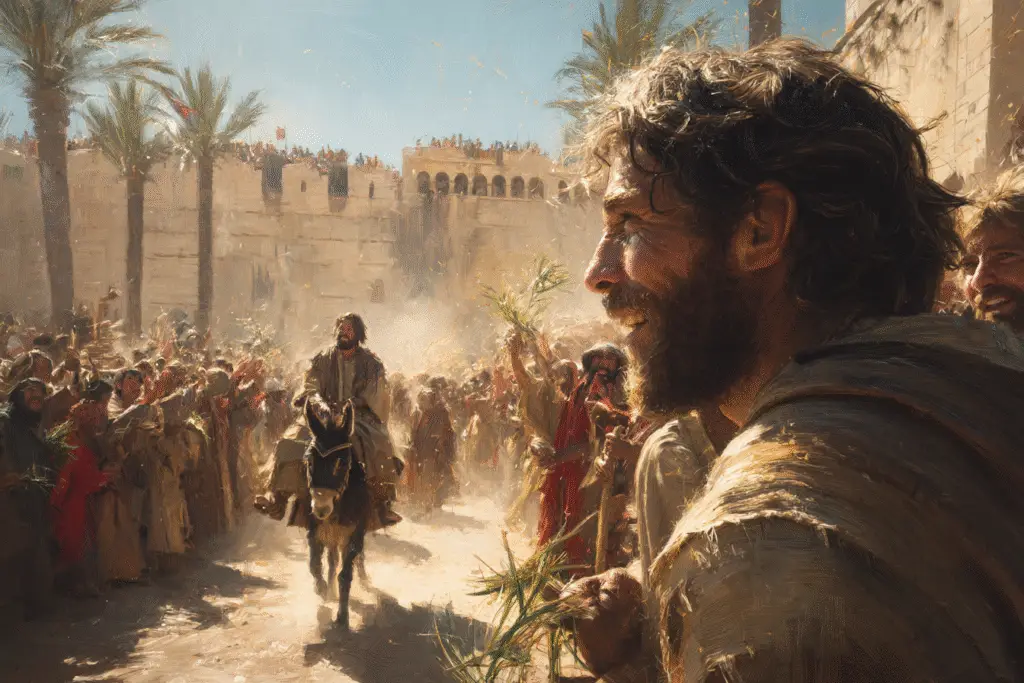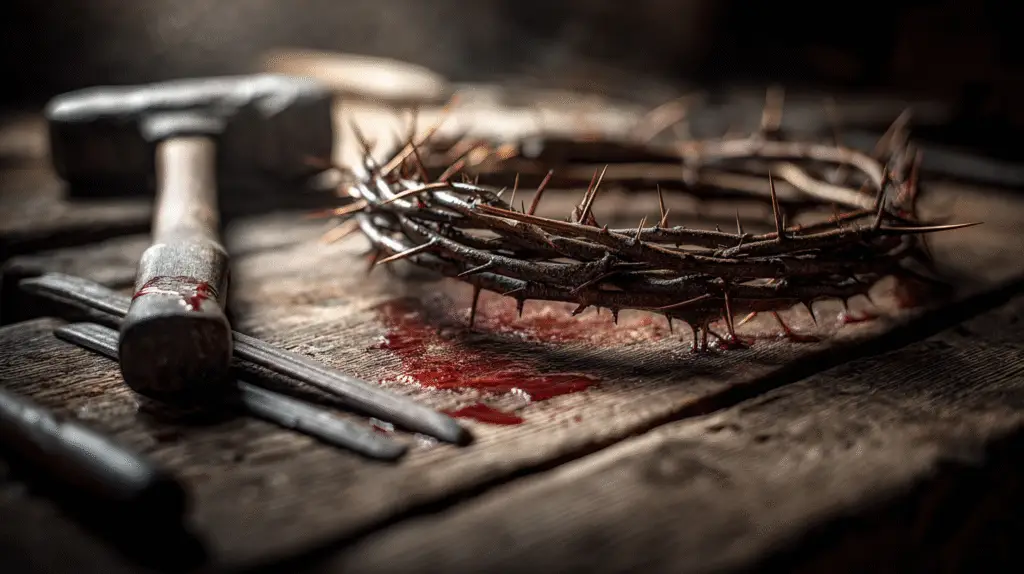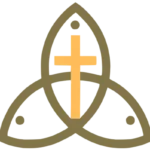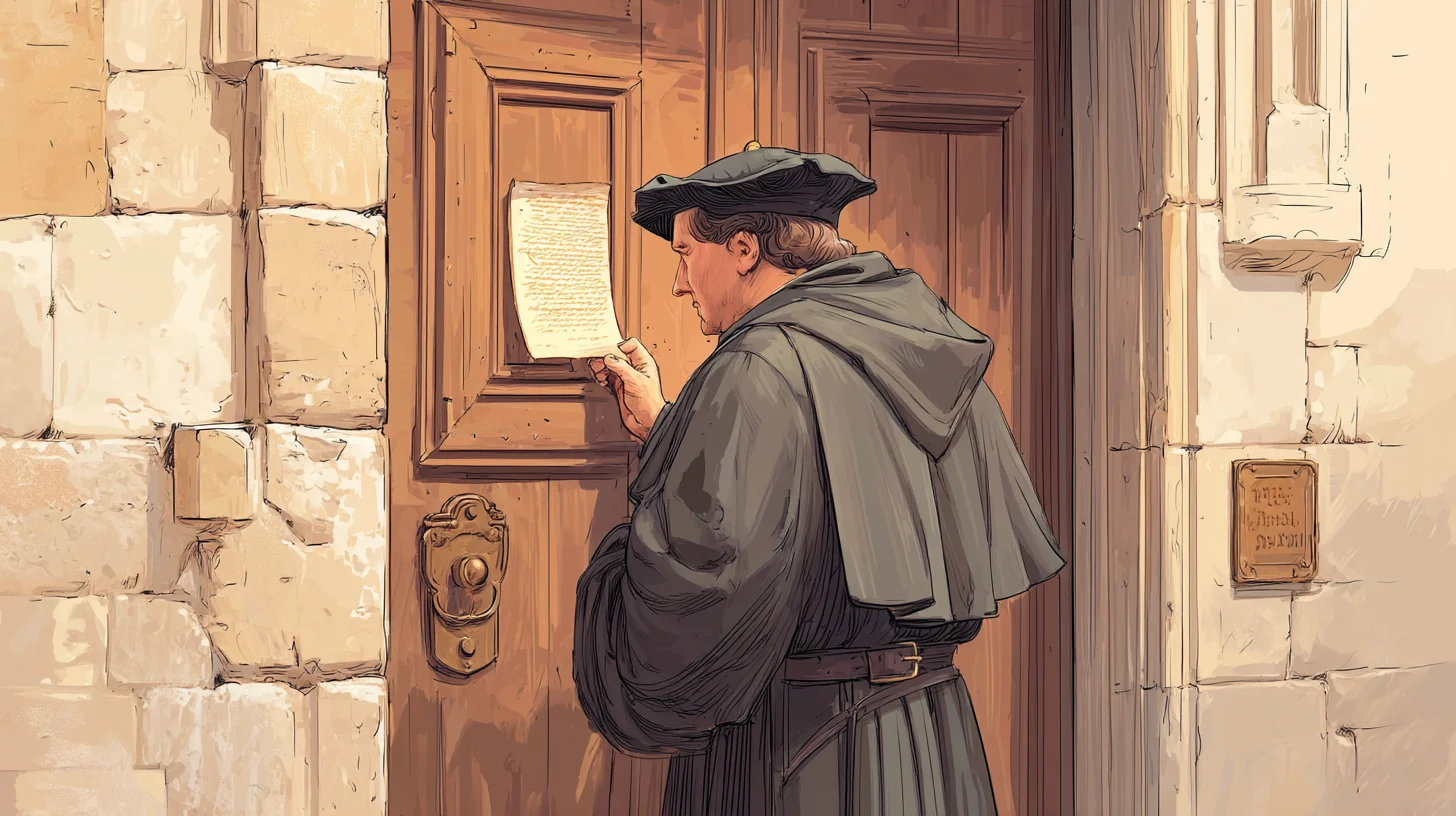The week that would transform history began with jubilation. Simon Peter could hardly believe his ears as the crowds roared their approval. Walking alongside his Master as they entered Jerusalem, he exchanged glances with John—could this finally be the moment? After three years of following Jesus through dusty Galilean roads, witnessing miracles, and hearing teachings that stirred their souls, was the kingdom about to be established?
Palm Sunday: The Triumphant Entry

“Hosanna to the Son of David!” The shouts echoed off Jerusalem’s ancient walls as people spread their cloaks and palm branches on the road. Peter watched Jesus riding on the young donkey, deliberately fulfilling Zechariah’s prophecy. The significance wasn’t lost on him—this was a royal procession, albeit one marked by humility rather than military might.
“Look at them all,” Andrew whispered to his brother Peter. “They’re finally recognizing him!”
John, the youngest disciple, observed the scene with a mixture of pride and uncertainty. He had witnessed Jesus raise Lazarus from the dead just days earlier. News of that miracle had spread throughout Jerusalem, fueling this remarkable reception. Yet something in Jesus’ demeanor suggested this triumph wasn’t unfolding quite as they expected.
The disciples had debated among themselves what would happen when they reached Jerusalem. James and John had even approached Jesus requesting positions of honor in his coming government. Now, riding this wave of popular support, it seemed their boldness might be rewarded. Surely this acclaim would force the hand of the religious authorities who opposed him.
Monday and Tuesday: Confrontation in the Temple
The following day brought a shocking development. Jesus entered the Temple courts and overturned the tables of the money changers, driving out those selling sacrificial animals. “My house shall be called a house of prayer,” he declared, “but you make it a den of thieves!”
Peter watched nervously as the Temple guards looked on, seemingly paralyzed by Jesus’ moral authority and the support of the crowds. The disciples exchanged glances—this confrontation with the religious establishment was direct and unprecedented.
“He’s challenging them on their own ground,” Thomas observed quietly.
Over the next days, Jesus taught openly in the Temple, sparring verbally with religious leaders who tried to trap him with questions about taxes, resurrection, and commandments. The disciples listened with growing unease as Jesus denounced the hypocrisy of the scribes and Pharisees with increasingly forceful language.
Matthew, once a tax collector, noted how the religious authorities’ faces hardened with each exchange. “They’re not just annoyed anymore,” he murmured to Philip. “They hate him.”
Wednesday and Thursday: Shadows Lengthen
By mid-week, something had shifted. Jesus began speaking more explicitly about his coming death. The jubilation of Palm Sunday seemed distant now. Judas had grown increasingly withdrawn, his expressions unreadable as Jesus spoke of betrayal and suffering.
Peter refused to accept such talk. “This will never happen to you, Lord,” he insisted after one such prediction.
“Get behind me, Satan,” Jesus rebuked him sharply. “You do not have in mind the concerns of God, but merely human concerns.”
The words stung Peter deeply. Confusion settled over the disciples like a heavy cloak.
Thursday evening brought them to an upper room for the Passover meal. The atmosphere was charged with tension as Jesus took bread, blessed it, and declared, “This is my body given for you.” Later, he passed a cup of wine, saying, “This cup is the new covenant in my blood, which is poured out for you.”
John, reclining closest to Jesus, felt a growing dread. When Jesus announced that one of them would betray him, the disciples looked at one another in bewilderment and distress.
After dinner, they walked to Gethsemane. Peter noticed Jesus’ unusual agitation as he asked them to watch and pray. But exhaustion and emotional turmoil overtook them, and they fell asleep despite Jesus’ repeated requests for support.
Then came the torchlight, the kiss of betrayal, the flash of Peter’s sword, and Jesus’ final miracle—healing the servant’s ear before surrendering himself.
Friday: Darkness Falls
Dawn brought horror. The disciples, scattered and hiding, received fragmentary reports of Jesus’ trials before the Sanhedrin and Pilate. Peter, having denied Jesus three times before cockcrow as predicted, wept bitterly in a secluded corner of Jerusalem.

John alone found courage to follow to Golgotha, supporting Mary as she watched her son’s execution. The other disciples huddled in secret locations throughout the city, paralyzed by fear and crushing disappointment.
“How could we have been so wrong?” Philip questioned. “We left everything to follow him.”
The theological framework that had sustained them—that Jesus was the Messiah who would restore Israel—lay shattered. Their Master hung on a Roman cross between common criminals, crying out, “My God, my God, why have you forsaken me?” before breathing his last.
As Sabbath approached, they received word that Jesus’ body had been hastily placed in Joseph of Arimathea’s tomb. Their world had collapsed. Dreams of the kingdom evaporated. The movement that had given their lives purpose for three years appeared to have ended in humiliating failure.
Sunday: Incomprehensible Joy
Early Sunday morning, Mary Magdalene burst into their hiding place with an incredible claim: “The tomb is empty! I have seen the Lord!”

Peter and John raced to the tomb, finding it empty as reported. Grave cloths lay neatly folded, but no body. John would later record that in that moment, “He saw and believed”—though what exactly he believed remained unclear.
Throughout that day, reports accumulated: Jesus appearing to women, to Cleopas and his companion on the Emmaus road, and finally, that evening, to the disciples themselves as they hid behind locked doors.
“Peace be with you,” came the familiar voice as Jesus suddenly stood among them. He showed them his wounded hands and side, ate broiled fish to prove he wasn’t a ghost, and breathed on them, saying, “Receive the Holy Spirit.”
Thomas, absent during this appearance, declared he wouldn’t believe without touching Jesus’ wounds. A week later, Jesus appeared again specifically to address Thomas’s doubts, inviting him to “Stop doubting and believe.”
For forty days, these appearances continued. The disciples’ understanding gradually transformed as Jesus opened the Scriptures to them, showing how his death and resurrection fulfilled prophecy rather than contradicting it. The kingdom would come, but not as they had imagined.
What began with triumphal entry ended with a greater triumph—not over Rome, but over death itself. The week that started with palm branches concluded with an empty tomb and a commission to take this news to all nations. For Peter, John, and their companions, Holy Week was a journey from misunderstanding to illumination, from crushed hopes to a deeper, more profound hope that would soon transform the world.



